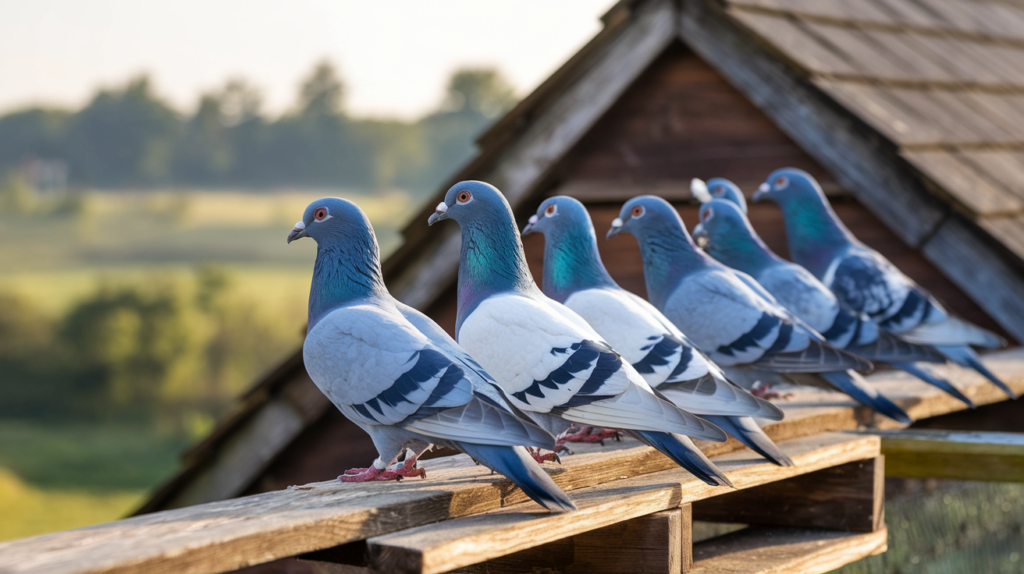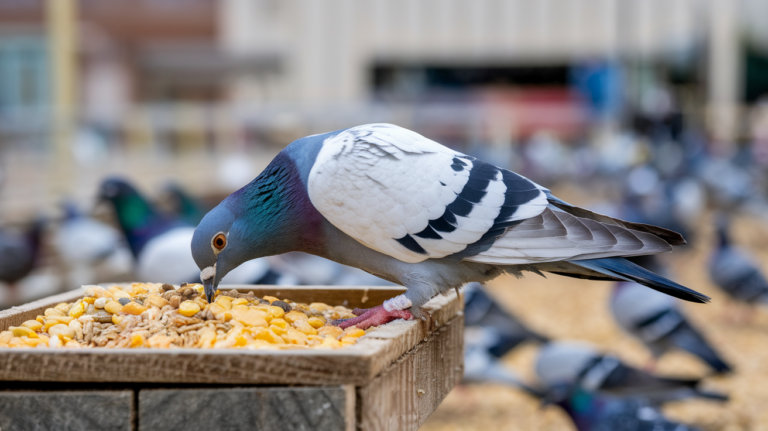
One of the most debated topics among pigeon fanciers is whether to allow race pigeons open loft time every day. Some argue that controlled training is enough, while others swear by daily free loft flying to maintain top condition. But just how important is open loft for racing pigeons?
In this article, we’ll break down the benefits, potential downsides, and best practices for incorporating open loft for racing pigeons into your daily routine.
What Is Open Loft and Why Does It Matter?
Open loft simply means allowing pigeons unrestricted access to the outside for free flight during the day. Instead of being confined to the loft, they have the freedom to fly, exercise, and regulate their own training intensity.
Many top fanciers believe that regular open loft time is a crucial part of conditioning. It not only enhances physical fitness but also contributes to mental sharpness and loft loyalty.
The Benefits of Open Loft for Racing Pigeons
1. Boosts Physical Fitness and Wing Strength
Pigeons that have daily open loft time naturally develop stronger wing muscles. Unlike controlled training flights, where they may only be in the air for a set time, open loft allows them to fly at different intensities, improving overall endurance.
2. Encourages Mental Stimulation and Navigation Skills
Free flight helps pigeons become more aware of their surroundings, improving their orientation skills. Birds that spend more time outside develop a sharper sense of navigation, which is critical in races where split-second decisions can determine placement.
3. Improves Respiratory Health
Pigeons in a closed loft are exposed to dust, droppings, and potential respiratory issues. Allowing daily open loft time exposes them to fresh air, reducing the risk of respiratory infections and keeping their lungs in peak condition.
4. Enhances Recovery and Reduces Stress
Pigeons confined too much can become stressed, leading to poor condition and lackluster race results. Open loft provides natural stress relief, allowing birds to move at their own pace and recover after intense training sessions.
5. Increases Loft Loyalty and Trapping Speed
Contrary to concerns about losing pigeons, daily open loft time actually reinforces loft loyalty. Birds become more familiar with their home surroundings, making them more eager to return quickly after training and races.
Potential Downsides and How to Manage Them
While open loft offers great benefits, there are a few challenges that fanciers need to manage.
1. Predator Risks
One of the biggest concerns with open loft time is exposure to hawks and other predators. To minimize risks:
- Fly birds at times when predators are less active.
- Use deterrents like reflective tape or decoys.
- Keep a schedule so pigeons learn to expect safe flying times.
2. Loft Discipline and Control
Some fanciers worry that open loft birds may become harder to control. However, if trained correctly, pigeons still respect feeding schedules and respond well to trapping training.
3. Injury Risks
Pigeons flying freely can sometimes injure themselves on wires, buildings, or during territorial disputes. The best way to minimize this is by observing their flights and ensuring a safe release environment.
Best Practices for Open Loft Time
To maximize the benefits while minimizing risks, follow these best practices:
✅ Set a Consistent Schedule
- Release birds at the same time every day to create routine and discipline.
- Allow loft flying after morning or evening training flights.
✅ Monitor Weather Conditions
- Avoid extreme heat or strong winds, which can exhaust pigeons or lead to injuries.
- Ensure birds have access to fresh water upon return.
✅ Train Loft Trapping Skills
- Use feeding time as a reward for quick trapping.
- Encourage trapping discipline by calling birds in consistently.
✅ Combine Open Loft with Structured Training
- Open loft should not replace road training or structured exercise flights.
- Use it as an additional conditioning method to keep pigeons sharp.
Final Thoughts: Should You Use Open Loft Every Day?
For most racing lofts, daily open loft for racing pigeons is highly beneficial when managed correctly. It keeps birds in peak physical and mental condition, enhances loft loyalty, and improves respiratory health. However, fanciers should always consider their own local environment, predator risks, and loft setup before making it a daily routine.
If you balance open loft with structured training and loft discipline, your pigeons will develop into well-conditioned, motivated, and race-ready athletes.






